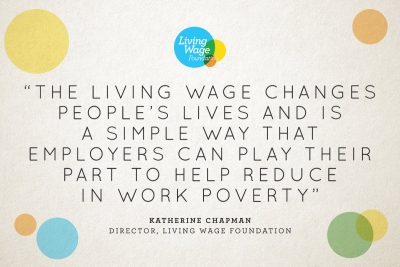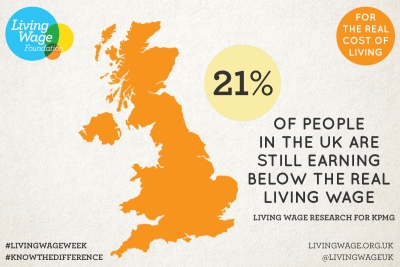A new report from the Joseph Rowntree Foundation finds that 14 million people living in poverty in the UK - over one in five of the population. This is made up of 8 million working-age adults, 4 million children and 1.9 million pensioners.
UK Poverty 2017 looks to assess the UK's progress in reducing poverty rates and tackling the drivers of poverty.
Katherine Chapman, Director of the Living Wage Foundation, said:
"As today's report highlights, too many people in the UK are struggling to get by day-to-day as costs rise and wages stagnate - and shockingly an extra 400,000 children are now in poverty since 2013.
"It is more important than ever that more organisations join the 3,700 Living Wage employers across the UK who have committed to pay their employees, including contractors, a real Living Wage, that meets the rising cost of living. The Living Wage changes people's lives and is a simple way that employers can play their part to help reduce in work poverty and provide dignity, security and stability to everyone who works for them."

Last month the real Living Wage was raised to £10.20 an hour in London and £8.75 for the rest of the UK, providing over 150,000 workers with a pay rise. Despite this, the 2017 Living Wage report for KPMG, published prior to the announcement of the new rates, found that one in five people (21 percent) in the UK are still earning below the real Living Wage, meaning that an estimated 5.5 million employees are struggling to get out of in-work poverty, with 62% of those earning less than the real Living Wage being women.

More than 3,700 employers are now signed up to pay their employees a fair day’s pay for a fair day’s work, with accredited organisations including over a third of the FTSE 100, household names such as Heathrow Airport, Somerset House, IKEA, Aviva, Nationwide, Chelsea and Everton Football Clubs and Google, as well as thousands of small businesses, who are choosing to pay the real Living Wage to ensure all staff, including onsite contractors, earn a wage that meets the real cost of living.
The Living Wage rates are independently calculated, based on the real cost of living in the UK and London. The 2017 increases have been largely driven by higher inflation feeding through to the basket of goods and services that underpin the rates, with rising private rents and transport costs also having an impact.
